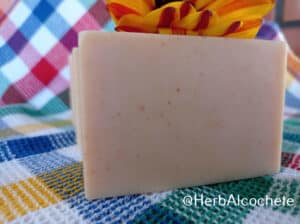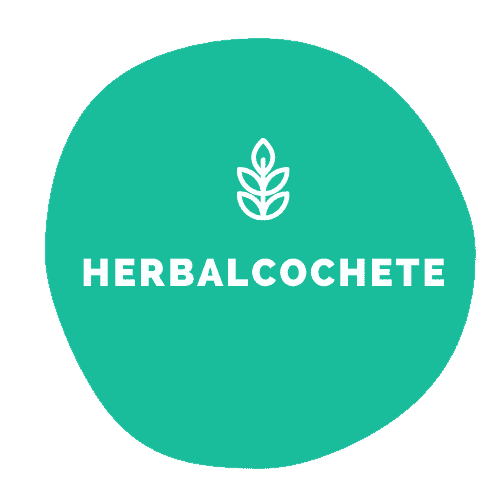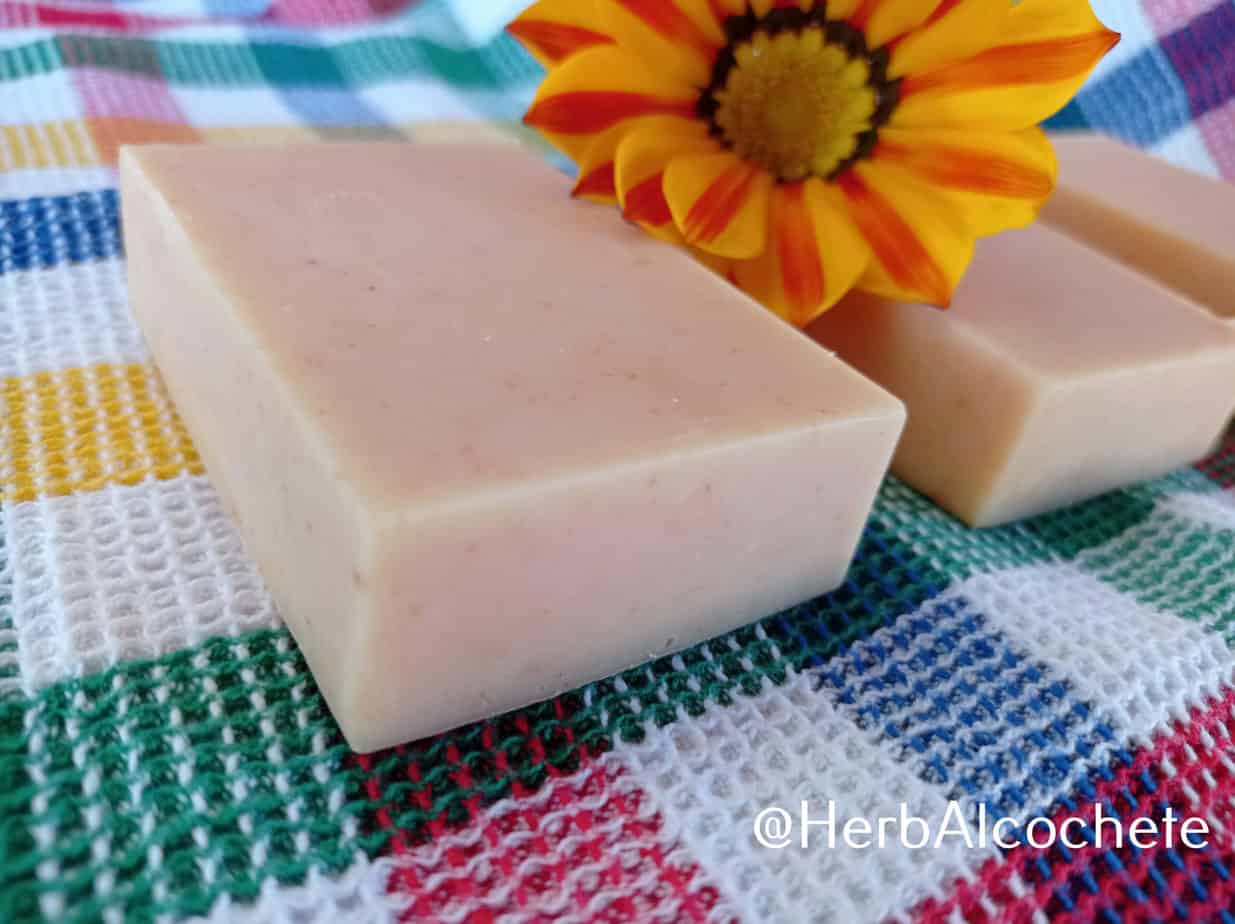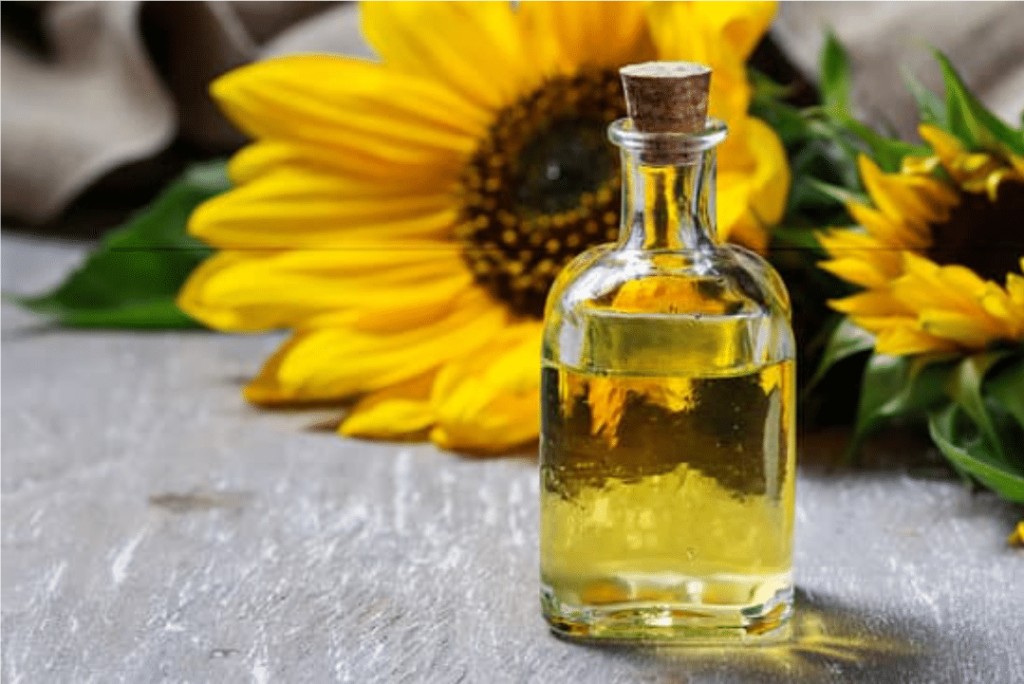Extend your soapmaking knowledge and give it a try at this paprika cold process soap recipe, without coconut oil or olive oil, and scented with litsea cubeba essential oil.
This soap recipe comes with a lot of surprises: paprika as a natural colorant – yes you can use the food one; no coconut oil soap; no olive oil soap; using grapeseed and avocado oils. I’ve used a whole new set of oils that produced a hard, creamy, almost silky bar of soap. It doesn’t make a lot of foam, but it lathers well enough. A proof that you can make soap with pretty much any oil mixture.
Table of Contents
- A Soap Without Coconut Oil Or Olive Oil
- Paprika As A Natural Colorant
- Paprika Cold Process Soap Recipe
- Find Where To Buy Handmade Paprika Soap
- How To Use This Soap
- Related Posts
- Watch This Video About Safety
- Cold Process Soap Making Tutorial Video
- Cold Process Soap Making Lessons
A Soap Without Coconut Oil Or Olive Oil
Olive oil and coconut oil are must-have’s in any handmade soap recipe. But do they really have to be there? No, you can make soap with any oil mixture.
Coconut oil gives a lot of foam to your soap, so soap makers tend to include it in handmade soap. Seems like we all associate lots of foam with cleaning power.
Olive oil is highly conditioning and mild in soap. It is also a common oil in southern Europe, making it my elected local oil. I tend to make a lot of 100% olive oil soap, for economical reasons. But you can replace it easily with other conditioning oils like sunflower oil.
A Rich Mix of Oils
So, I’ve decided to skip olive oil this time to have a white base soap, and see how paprika would end up as a natural colorant. And why did I skip coconut oil? Simply because I didn’t have it at home at that time. And then I’ve figured I don’t need to be dependent of any oil to make soap.
The oils for this recipe are: palm oil, sunflower oil, sweet almond oil, castor oil, avocado oil and grapeseed oil. Why so many? Well, because you have to respect a maximum percentage for each oil or your soap becomes too soft. I also had some oils near “best by” date (not exactly the best for soap…), and decided they were better employed in soap than just wasted.
Fact is the resulting soap is silky, creamy, resembling of olive oil soap, and it lathers decently. You don’t have to be “hostage” of olive oil or coconut oil to make good soap.
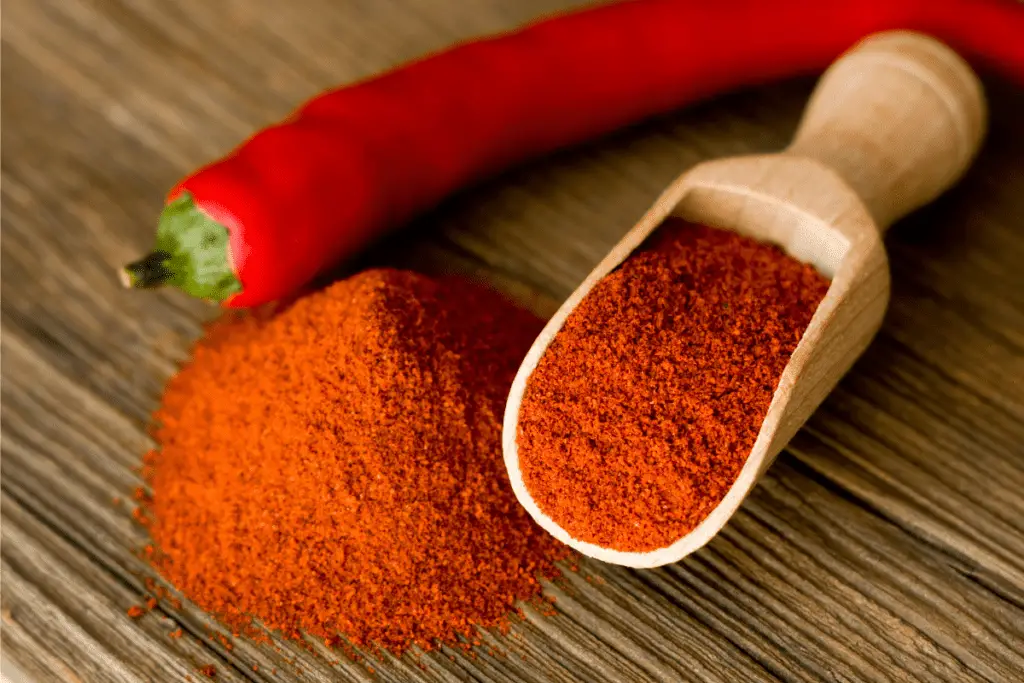
Paprika As A Natural Colorant
Paprika is a spice made from dried and ground red peppers. Carotenoids present in peppers are responsible for its vibrant color, a mix of red, orange and not so much yellow. I’ve made this paprika cold process soap recipe by adding paprika at trace, but the color is much stronger if you infuse an oil with paprika – that will be my next experience with paprika.
Paprika Cold Process Soap Recipe
It’s not exactly an economical recipe, but on the other hand, you can make a similar recipe (with SoapCalc, see how in How Do You Use A Lye Soap Calculator?) with palm oil and leftovers from several oil bottles – sometimes you just have to use them as the “best by” date is getting close….
May Chang essential oil is a natural citrusy scent, good and lasting for soap. I don’t know if it was the paprika or the oil mixture, but fact is it’s been a while since I had such good and intense citrusy aroma in soap. Paprika, as already explained, is used as natural colorant. Unlike what I’ve read, the final soap doesn’t get “scratchy” with paprika, but it’s cleansing.
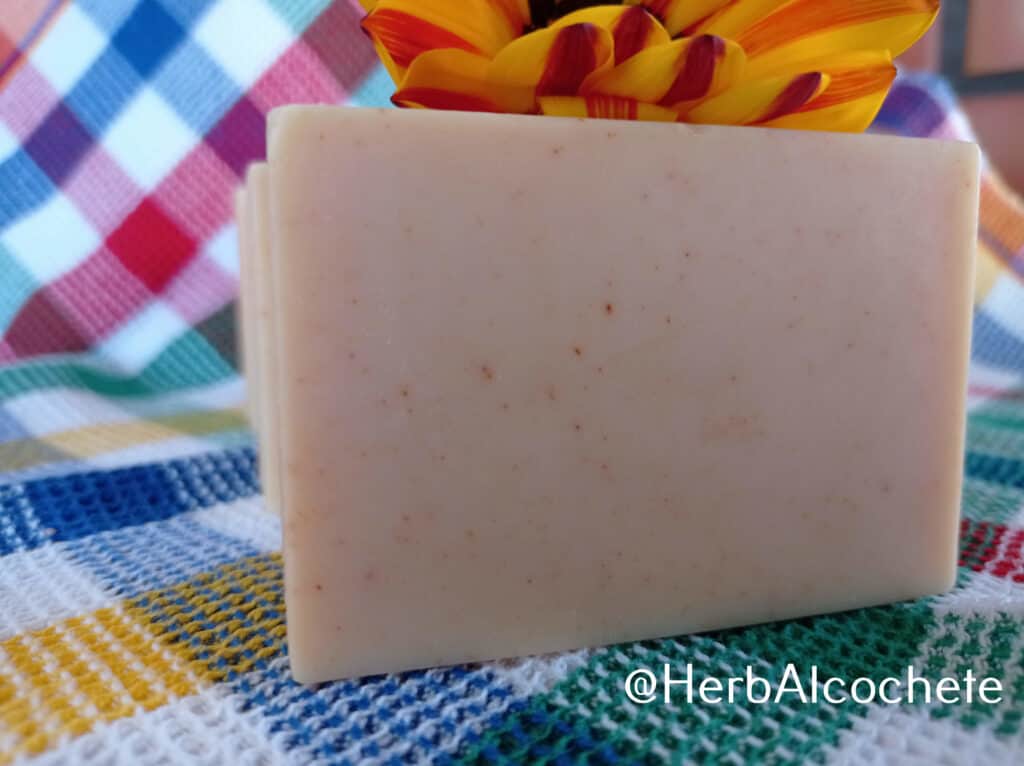
Try this recipe and enjoy your soaps!!
Find Where To Buy Handmade Paprika Soap
Still not inspired to make your own soap at home? But you do wish to use or give it a try at handmade paprika soap. Or even try a no coconut oil soap? You can find a few options online to buy handmade soap below:
How To Use This Soap
In the shower or bath, wet your hands and rub your soap in them to create a lather. Wash your hands first, then repeat the process and apply soap to your whole body using the soap directly and your hands. You may also wash your face with it. Rinse hands and body abundantly. Also wash your soap from lather before placing it in your soap dish or bag saver.
Washcloths and sponges should be avoided. Avoid washing your intimate zone and your hair, soap pH in not adequate for those parts of your body. Avoid eye contact with soap to prevent stinging. Make a patch test before using your soap. Stop using your soap if you feel any immediate adverse reaction in your skin (red skin, rashes, itching).
To take best advantage of your handmade soap (made by yourself or store-bougth), read How Do You Use Handmade Soap?
Related Posts
Ingredients and Recipes
- Vegetable oils: Oil Properties For Soap Making
- Essential oils: Best Essential Oils for Soap Making
- Colorants: How To Color Your Soap With Kitchen Ingredients
- Beginner Recipes: Soap Recipes for Beginners
- Cold Process Soap Recipes: Free Cold Process Soap Recipes
Soap Making Techniques and Troubleshooting
- Cold Process Tutorial Guide: Learn To Make Cold Process Soap?
- Soap Making Methods: How To Make Soap At Home
- Soap Making Trace: Know Everything About Trace in Soap Making
- Soap Acceleration: Causes, How To Avoid It Or How To Fix It
- Soda Ash In Soap: What It Is, How to Remove It
Watch This Video About Safety
Cold Process Soap Making Tutorial Video
Cold Process Soap Making Lessons
The tutorials in this blog are a great – and free! – help to start with cold process soap making. Practice is the next step to harness the art of making soaps at home. However, I understand if you prefer to have some formal lessons, where you will feel more supported with the steps. Feel free to join these courses at Udemy.
Equipment
Ingredients
Lye Water
- 175 g distilled water
- 58 g lye (100% sodium hydroxide)
Oils/Fat
- 243 g RSPO palm oil
- 45 g castor oil
- 72 g sunflower oil
- 45 g sweet almond oil
- 18 g avocado oil
- 27 g grapeseed oil
- 1 tsp paprika
Add After Trace
- 8 drops grapefruit seed extract (GSE) (anti-oxidant)
- 13 ml essential oil litsea cubeba/may chang or other (optional)
- alcohol or witch hazel to sprinkle
Instructions
Get Ready!
- Wear goggles and gloves! Look at “Safety Precautions” in the video above or in Soap Making Safety Precautions
- Watch the video above about "Cold Process Soap Making Tutorial" or read the post Learn To Make Cold Process Soap for instructions on cold process soap making before starting. These are generic but important steps for all recipes.
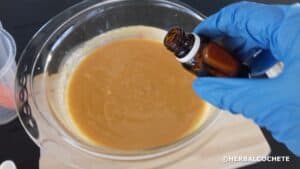
- Assemble everything: ingredients, equipment, safety equipment. Prepare your workstations. Measure all the ingredients. Don’t start the recipe without having everything ready!
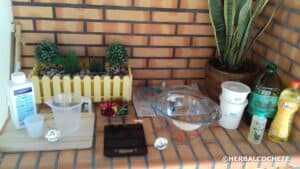
Preparing the colorant
- After measuring your oils, remove 1 tbsp of liquid oil and mix it well with the paprika. Avoid clumps.
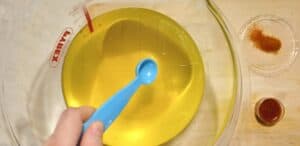
Heat the Oils
- Heat all your oils in a pyrex bowl at the microwave until the palm oil melts. Use 1 min periods and check temperature. The oils shouldn't overheat (> 60ºC or 140ºF)
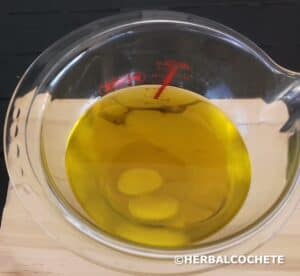
Make the Lye Water
- Make the lye solution according to How To Make Lye Water. Mix it until the vapors start to dissipate.
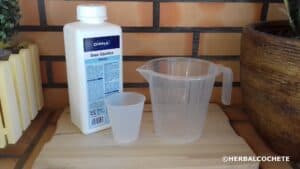
Make the Soap Batter
- Use as target temperature 38ºC for the oil-solution mixture. It can be less than this, but the lye and oils should not have a difference of more than 10º between them.
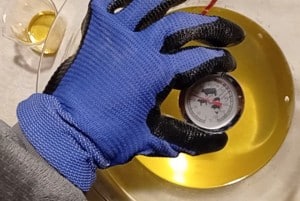
- Mix oils and lye with the immersion blender. Add the oil with paprika during this operation. It's not usual, but paprika may accelerate trace. If it does, be swift with next instructions.
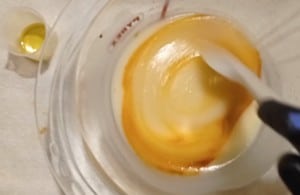
- Reach trace with the immersion blender.
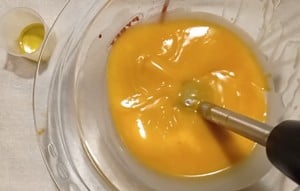
- Add the extract and essential oil after tracing. Mix with a spoon or spatula.
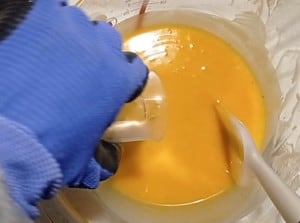
Molding and Curing
- Pour the dough in the molds with a pitcher and sprinkle with alcohol or witch hazel.
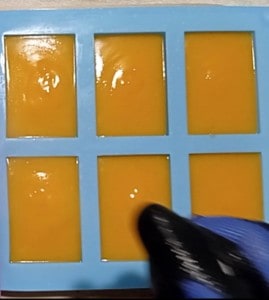
- Let it set for 48 hours.
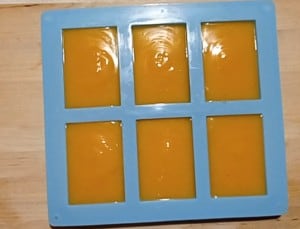
- Unmold and let the bars cure for 4 to 6 weeks. See How To Cure Soap.
